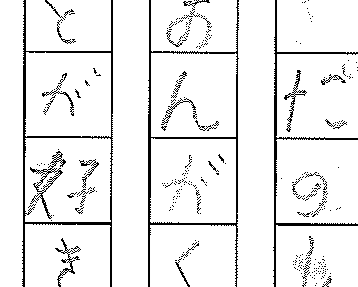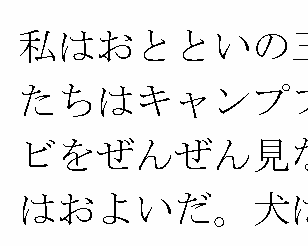Languages: Japanese - Satisfactory - Years 9 and 10 (Year 7 entry)
Portfolio summary
This portfolio of student work shows that the student uses written and spoken Japanese to interact with peers, the teacher and other Japanese speakers to exchange information and opinions about personal interests and experiences (WS1, WS3). With support the student shares information about broader topics of interest, such as education, travel, sport, teenage life (WS1, WS2, WS3) and popular culture. The student asks and responds to questions using spontaneous language. The student provides explanations, opinions and reasons (WS2, WS1, WS3). The student maintains and extends interactions by requesting repetition or clarification and by using あいづち. The student applies appropriate conventions of pronunciation, rhythm and phrasing in speech to allow for others’ use of あいづち. The student reads and writes hiragana and known kanji (WS1, WS3), reads katakana (WS2), and writes familiar katakana words, including elongated vowels, double consonants and contractions (WS1, WS3). The student analyses and extracts information from a range of spoken and written texts and multimodal sources. The student understands gist and predicts the meaning of unfamiliar words and expressions from context, grammatical and vocabulary knowledge. The student creates and presents informative (WS1, WS3) and imaginative texts, taking into account audience and purpose (WS1), and the plain form (WS3). The student extends or qualifies messages by using adverbs and links ideas by using conjunctions (WS1, WS3). The student translates (WS2) and interprets texts, explaining words and expressions that are difficult to translate and those with embedded cultural meanings (WS2). The student describes reactions to intercultural experiences and reflects on how their own assumptions and identity influence and are influenced by their language use (WS2).
The student identifies the functions of different scripts within texts: (WS2) how hiragana is used for particles, conjunctions, and verb and adjective endings; (WS2, WS3) katakana for borrowed words and some onomatopoeia; and kanji for nouns and verb and adjective stems. The student applies the understanding of kanji (WS2) to identify word boundaries and know its role in assisting with the identification of linguistic elements. The student distinguishes between おくりがな and ふりがなand recognises that kanji can be pronounced differently using 音 (on) or 訓 (kun) readings. The student understands the function of verb stems, and of てform and plain form verbs (WS1, WS3) and conjugates a range of verb tenses and forms (WS3). The student applies understanding of conjugation to produce negative and past adjectives (WS3). The student identifies and uses a range of case particles (WS2, WS3). The student uses metalanguage to describe and compare language features and rules of sentence construction (WS2). The student chooses between using です/ますor plain form based on age, relationship, familiarity, context and text type, such as using plain form in a personal diary (WS3). The student understands that languages change over time through contact with other languages and cultures and identifies the particular impact of technology and media on contemporary forms of communication, for example, the widespread adoption of English terms into Japanese. The student explains how Japanese cultural values such as the importance of community (WS2), respect, and consideration for others are embedded in language and behaviours (WS2).


